Helix (gastropod)
| Helix | |
|---|---|
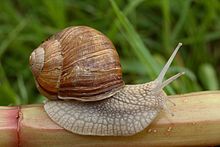
| |
| Helix pomatia | |
| Scientific classification | |
| Kingdom: | Animalia |
| Phylum: | Mollusca |
| Class: | Gastropoda |
| Subclass: | Heterobranchia |
| Superorder: | Eupulmonata |
| Order: | Stylommatophora |
| Infraorder: | |
| Superfamily: | Helicoidea |
| Family: | Helicidae |
| Genus: | Helix Linnaeus, 1758 |
| Type species | |
| Helix pomatia | |
Helix is a genus of large, air-breathing land snails native to Europe and the Mediterranean region. They are the type genus of the family Helicidae, and are among the first animal genera described by Carl Linnaeus.[1] Members of the genus first appeared during the Oligocene.[2] Like most land snails, Helix species are hermaphroditic, and like other helicids, a courting pair will impale each other with hormone-rich love darts prior to exchanging sperm. Well-known species include Helix pomatia (Roman snail, Burgundy snail, or edible snail) and Helix lucorum (Turkish snail). Cornu aspersum (garden snail) – another well-known helicid – was originally described as a member of Helix (as "Helix aspersa"), but the prevailing classification places it as the sole member of the sister genus Cornu.[1]
Helix snails have been harvested for human consumption since prehistoric times.[3] In the common era, members of the genus (particularly H. pomatia) are farmed throughout the world for the dish escargot, an hors d'oeuvre. The establishment of snail farms outside of Europe has introduced several species to North America, South America, and Africa, where some escapees have established themselves as invasive species.[4][5][6][7]
Taxonomy[]
Some taxonomists remove the species "Helix aperta", "Helix aspersa", and "Helix mazzullii" from the genus Helix and place them in their own monotypic genera as Cantareus apertus, Cornu aspersum,[8] and Cantareus mazzullii.
At the beginning in the mid-1700s, the generic name Helix had been used for almost all terrestrial gastropods; later this was restricted to species with helicoid habitus, including zonitids and other groups. In the course of the 1800s, more groups were removed, but prior to 1900, several thousand helicid and hygromiid species of Europe and abroad had still been classified in the genus Helix.[9][10] By the early 1900s, the genus was split into many separate genera, leaving only some 30 species closely related to its type species Helix pomatia in the genus.
The genus Helix has many synonyms:
- Callunea Scudder, 1882
- Cochlea Da Costa, 1778
- Coenatoria Held, 1838
- Cunula Pallary, 1936
- Glischrus S. Studer, 1820
- Glischrus (Helix) Linnaeus, 1758
- Helicites W. Martin, 1809 (Established for fossils of Helix to distinguish them from extant members of that taxon. Invalid: available only for the purposes of the Principle of Homonymy (Art. 20))
- Helicogena A. Férussac, 1821
- Helix (Helix) Linnaeus, 1758· accepted, alternate representation
- Helix (Pelasga) P. Hesse, 1908· accepted, alternate representation
- Megastoma Scudder, 1882
- Naegelea P. Hesse, 1918
- Pachyphallus P. Hesse, 1918
- Pentataenia A. Schmidt, 1855 (junior objective synonym)
- Physospira C.R. Boettger, 1914
- Pomatia Beck, 1837
- Pomatiana Fagot, 1903
- Pomatiella Pallary, 1909
- Pseudofigulina P. Hesse, 1917
- Rhododerma P. Hesse, 1918
- Tammouzia Pallary, 1939
Many species of Helix have been brought into synonymy:
- Helix achates Rossmässler, 1835: synonym of Chilostoma achates (Rossmässler, 1835)
- Helix afra Gmelin, 1791: synonym of (Bruguière, 1789)
- Helix amarula Linnaeus, 1758: synonym of (Linnaeus, 1758)
- Helix ambigua Linnaeus, 1758: synonym of Fossarus ambiguus (Linnaeus, 1758)
- Helix ampullacea Linnaeus, 1758: synonym of Pila ampullacea (Linnaeus, 1758)
- Helix aorangi Suter, 1890: synonym of (Suter, 1890)
- Helix auricularia Linnaeus, 1758: synonym of Radix auricularia (Linnaeus, 1758)
- Helix australis Férussac, 1821: synonym of (Férussac, 1821)
- Helix cingulata (Studer, 1820): synonym of Chilostoma cingulatum (Studer, 1820)
- Helix cingulata var. olympica Roth, 1855: synonym of (Roth, 1855)
- Helix complanata Linnaeus, 1758: synonym of Hippeutis complanatus (Linnaeus, 1758)
- Helix contorta Linnaeus, 1758: synonym of Bathyomphalus contortus (Linnaeus, 1758)
- Helix corallina Chemnitz, 1795: synonym of (Broderip, 1832)
- Helix coriacea Pallas, 1788: synonym of (Pallas, 1788)
- Helix cornuarietis Linnaeus, 1758: synonym of Marisa cornuarietis (Linnaeus, 1758)
- Helix corvus Gmelin, 1791: synonym of (Gmelin, 1791)
- Helix crenata Gmelin, 1791: synonym of Amphibola crenata (Gmelin, 1791)
- Helix cyclostomoides Pfeiffer, 1840: synonym of (Pfeiffer, 1840)
- Helix decussata Montagu, 1803: synonym of Rissoina decussata (Montagu, 1803)
- Helix depressa Montagu, 1803: synonym of (O. Fabricius, 1780)
- Helix eburnea Mühlfeld, 1824: synonym of Melanella eburnea (Mühlfeld, 1824)
- Helix fasciata Adams J., 1800: synonym of Lacuna parva (da Costa, 1778)
- Helix fasciolata Spix in Wagner, 1827: synonym of (Swainson, 1823)
- Helix flavocincta Mühlfeld, 1829: synonym of Eulima glabra (da Costa, 1778)
- Helix fossaria Montagu, 1803: synonym of Galba truncatula (O. F. Müller, 1774)
- Helix fragilis Linnaeus, 1758: synonym of (Linnaeus, 1758)
- Helix fulgidus Adams J., 1797: synonym of Eatonina fulgida (Adams J., 1797)
- Helix glabrata Megerle von Mühlfeld, 1824: synonym of (Megerle von Mühlfeld, 1824)
- Helix glauca Linnaeus, 1758: synonym of Pomacea glauca (Linnaeus, 1758)
- Helix grenvillei Brazier, 1876: synonym of (Brazier, 1876)
- Helix haliotoidea Linnaeus, 1758: synonym of (Linnaeus, 1758)
- Helix janthina Linnaeus, 1758: synonym of Janthina janthina (Linnaeus, 1758)
- Helix janthina Linnaeus, 1764: synonym of Janthina prolongata Blainville, 1822: synonym of Janthina globosa Swainson, 1822
- Helix labiosa Montagu, 1803: synonym of Rissoa membranacea (J. Adams, 1800)
- Helix lacuna Montagu, 1803: synonym of Lacuna parva (da Costa, 1778)
- Helix laevigata Linnaeus, 1758: synonym of Velutina velutina (O. F. Müller, 1776)
- Helix littorina delle Chiaje, 1828: synonym of Paludinella littorina (delle Chiaje, 1828): synonym of Melarhaphe neritoides (Linnaeus, 1758)
- Helix macneili Crosse, 1873: synonym of (Crosse, 1873)
- Helix margarita Montagu, 1808: synonym of Margarites helicinus (Phipps, 1774)
- Helix mespillum Mühlfeld, 1824: synonym of Echinolittorina mespillum (Mühlfeld, 1824)
- Helix neritina Gmelin, 1791: synonym of Pomacea glauca (Linnaeus, 1758)
- Helix neritoidea Linnaeus, 1758: synonym of (Linnaeus, 1758)
- Helix neritoidea Gmelin, 1791: synonym of Lamellaria perspicua (Linnaeus, 1758)
- Helix nutans Mühlfeld, 1824: synonym of (Mühlfeld, 1824)
- Helix oculuscommunis Gmelin, 1791: synonym of Pomacea glauca (Linnaeus, 1758)
- Helix otis Turton, 1819: synonym of Otina ovata (Brown, 1827)
- Helix paradoxa Born, 1778: synonym of Chrysostoma paradoxum (Born, 1778)
- Helix perspicua Linnaeus, 1758: synonym of Lamellaria perspicua (Linnaeus, 1758)
- Helix petraea Montagu, 1803: synonym of Melarhaphe neritoides (Linnaeus, 1758)
- Helix platae Maton, 1811: synonym of (Maton, 1811)
- Helix priamus Gmelin, 1791: synonym of Ampulla priamus (Gmelin, 1791)
- Helix purpurea Gmelin, 1791: synonym of Cantharidus purpureus (Gmelin, 1791)
- Helix rodriguezensis Crosse, 1873: synonym of Dancea rodriguezensis (Crosse, 1873)
- Helix scabra Linnaeus, 1758: synonym of Littoraria scabra (Linnaeus, 1758)
- Helix scarabaeus Linnaeus, 1758: synonym of Pythia scarabaeus (Linnaeus, 1758)
- Helix serpuloides Montagu, 1808: synonym of Skenea serpuloides (Montagu, 1808)
- Helix solida Born, 1778: synonym of Phasianella solida (Born, 1778)
- Helix stagnalis Linnaeus, 1758: synonym of Lymnaea stagnalis (Linnaeus, 1758)
- Helix stagnorum Gmelin, 1791: synonym of Heleobia stagnorum (Gmelin, 1791): synonym of Semisalsa stagnorum (Gmelin, 1791)
- Helix subcarinata Montagu, 1803: synonym of (Montagu, 1803)
- Helix subcylindrica Linnaeus, 1767: synonym of Truncatella subcylindrica (Linnaeus, 1767)
- Helix sulphurea C. B. Adams, 1849: synonym of Tonna pennata (Mörch, 1853)
- Helix tentaculata Linnaeus, 1758: synonym of Bithynia tentaculata (Linnaeus, 1758)
- Helix terebellum O. F. Müller, 1774: synonym of Pyramidella dolabrata (Linnaeus, 1758)
- Helix variabilis Megerle von Mühlfeld, 1824: synonym of Rissoa variabilis (Von Mühlfeldt, 1824)
Description[]

In addition to the hard, calcareous shell that covers and protects the internal organs, the head and foot regions can be observed when the snails are fully extended. When they are active, the organs such as the lung, heart, kidney, and intestines remain inside the shell; only the head and foot emerge.
The head of the snail has two pairs of tentacles; the upper and larger pair contains the eyes, and the lower pair is used to feel the ground in front. The mouth is located just underneath the head. The tentacles can be withdrawn or extended depending on the situation. The mouth has a tongue called a "radula" that is composed of many fine, chitinous teeth. This serves for rasping and cutting food.
Behaviour[]
From April through the northern summer, the number of snails copulating increases due to the higher temperature and humidity, which enhance the possibility of oviposition. The pulmonate snails are hermaphroditic, meaning that both female and male sexual organs are present in the same individual. The snails produce both eggs and sperm in the ovotestis (also called the hermaphrodite gland), but it is later separated into two divisions, a sperm duct and oviduct, respectively.
Mating takes several hours, sometimes a day. H. aspersa snails stab a calcite spine, known as a "love dart", at their partner. The love dart is coated with a mucus that contains a chemical that enables more than twice as many sperm to survive inside the recipient. A few days after mating, the eggs are laid in the soil. The eggs are usually 4–6 mm in diameter.
After snails hatch from the egg, they mature in one or more years, depending on where the organism lives. Maturity takes two years in Southern California, while it takes only 10 months in South Africa.
The size of the adult snails slightly varies with species. H. aspersa grows up to 35 mm in height and width, whereas H. pomatia grows up to 45 mm. The lifespan of snails in the wild is typically 2-3 years.
Some snails may live longer, perhaps even 30 years or older in the case of the Roman snail[11] but most live less than 8 years. Many deaths are due to predators and parasites.
Since its publication in March 1974 issue of Natural History[12] an estimate for the highest speed of garden snail equal to 0.03 mph (1.3 cm/s) became popular.[13] However, the accuracy of this estimate has been questioned by Robert Cameron, who pointed out that in competitions between snails, only 2.4 mm/s speed had been achieved.[14] There is a need for clarification and behavioural observation here though: competitions are usually held on the flat, whereas a snail's natural preference is vertical ascent, possibly an instinct derived from hatching in an earth "pod" and having to climb upwards to the surface.
Respiration[]
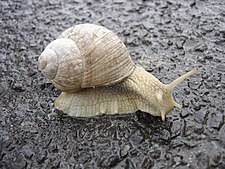
Since snails in the genus Helix are terrestrial rather than freshwater or marine, they have developed a simple lung for respiration. (Most other snails and gastropods have gills, instead.)
Oxygen is carried by the blood pigment hemocyanin. Both oxygen and carbon dioxide diffuse in and out of blood through the capillaries. A muscular valve regulates the process of opening and closing the entrance of the lung. When the valve opens, the air can either enter or leave the lung. The valve plays an important role in reducing water loss and preventing drowning.
Ecology[]
Helix snails prefer cool, damp environments, as they easily suffer moisture loss. Snails are most active at night and after rainfall. During unfavourable conditions, a snail remains inside its shell, usually under rocks or other hiding places, to avoid being discovered by predators. In dry climates, snails naturally congregate near water sources, including artificial sources such as wastewater outlets of air conditioners.
The common garden snail (H.aspersa) is herbivorous. These snails are able to digest most vegetation, including carrots and lettuce. They also have a specialized crop of symbiotic bacteria that aid in their digestion, especially with the breakdown of the polysaccharide cellulose into simple sugars.
Many predators, both specialist and generalist, feed on snails. Some animals, such as the song thrush, break the shell of the snail by hammering it against a hard object, such as stone, to expose its edible insides. Other predators, such as some species of frogs, circumvent the need to break snail shells by simply swallowing the snail whole, shell and all.
Some carnivorous species of snails, such as the decollate snail and the , also prey on Helix snails. Such carnivorous snails are commercially grown and sold to combat pest snail species. Many of these also escape into the wild, where they prey on indigenous snails, such as the Cuban land snails of the genus Polymita, and the indigenous snails of Hawaii.
Edible snails[]
H. pomatia and H. aspersa are the two edible species that are most used in European cuisine. Spanish cuisine also uses Otala punctata, Theba pisana, and , amongst others. The process of snail farming is called heliciculture.
Escargots are often traditionally served as appetizers. They may also be used as ingredients in other recipes.
Snails contain many nutrients. They are rich in calcium and also contain vitamin B1 and E. They contain various essential amino acids, and are low in calories and fat.[citation needed]
List of Helix species[]
| Scientific name[a] | IUCN Red List Status | Distribution | Picture |
|---|---|---|---|
| Rossmässler, 1839 |
LC IUCN | 
|

|
| Martens, 1874 |
|||
| Kobelt, 1896 |

| ||
| Castro, 1887 |

| ||
| Bourguignat, 1860 |
LC IUCN | 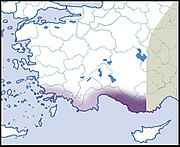
|
|
| Mousson, 1859 |
DD IUCN | ||
| (Dubois de Montpéreux, 1840) |
|||
| Westerlund, 1876 |
|||
| O. F. Müller, 1774 |
LC IUCN | 
|

|
| Kobelt, 1898 |

|
||
| Helix engaddensis Bourguignat, 1852 |

| ||
| O. Boettger, 1898 |
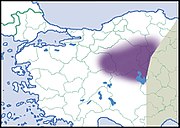
|
||
| Nägele, 1901 |
|||
| Helix figulina Rossmässler, 1839 |
LC IUCN | 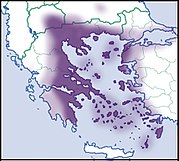
|

|
| L. Pfeiffer, 1848 |
|||
| L. Pfeiffer, 1846 |
|||
| Pallary, 1939 |
|||
| † Wenz in Krejci-Graf & Wenz, 1926 |
|||
| O. F. Müller, 1774 |
DD IUCN | 
|
|
| Helix lucorum Linnaeus, 1758 |

|

| |
| Helix lutescens Rossmässler, 1837 |
LC IUCN | 
|

|
| Helix melanostoma Draparnaud, 1801 |

|

| |
| Kobelt, 1906 |
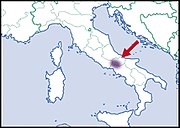
|
||
| † Sevastos, 1922 |
|||
| A. Férussac, 1821 |
|||
| Helix nucula Mousson, 1854 |
LC IUCN | 
|

|
| Bourguignat, 1860 |
|||
| Mousson, 1854 |
|||
| (Rolle, 1898) |
|||
| Rossmässler, 1839 |
LC IUCN | 
| |
| Mousson, 1854 |
LC IUCN | 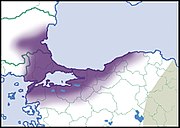
|
|
| Kobelt, 1876 |
|||
| Helix pomatia Linnaeus, 1758 |

| ||
| Westerlund & Blanc, 1879 |
|||
| Nägele, 1899 |
|||
| Mousson, 1859 |
|||
| Rossmässler, 1847 |
LC IUCN | 
|
|
| Briganti, 1825 |
LC IUCN | ||
| † Wenz in Krejci & Wenz, 1926 |
|||
| O. Boettger, 1886 |
LC IUCN | ||
| Souleyet, 1852 |
|||
| Kobelt, 1891 |
EN IUCN | 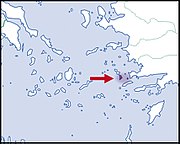
|
|
| (Kobelt, 1898) |
LC IUCN |
There are also 6 extinct species of Helix:
- De Stefani in De Stefani et al., 1891
- J. Martin, 1866
- Wenz in Krejci-Graf & Wenz, 1926
- Sevastos, 1922
- Wenz in Krejci & Wenz, 1926
Taxon inquirendum[]
Nomen dubium[]
- Helix calomorpha Jonas, 1839
- Helix cornea Draparnaud, 1801
- Helix laevigata Linnaeus, 1767 accepted as Velutina laevigata (Linnaeus, 1767) (nomen dubium, original combination)
- Helix minutialis Deshayes, 1851
- Helix multispirata Hombron & Jacquinot, 1852
- Helix oceanica Le Guillou, 1842
- Helix rotula Hombron & Jacquinot, 1852 (nomen dubium, invalid: junior homonym of Helix rotula Lowe, 1831; no replacement name available)
- Helix rugosa L. Pfeiffer, 1843
- Helix undulata Gmelin, 1791
- Helix unispiralis Montagu, 1803
Nomen nudum[]
Subgenus Helix (Pitys) H. Beck, 1837
- Helix (Pitys) oparana H. Beck, 1837
- Helix angulata Férussac, 1821
- Helix congellana Krauss in E. von Martens, 1860
- Helix exoptata Tate, 1882
- Helix globula Krynicki, 1838
- Helix ingrami Blanford, 1876
- Helix roseri F. Krauss in E. von Martens, 1860
- Helix roseri Krauss in E. von Martens, 1860
- Helix somersetii Prime, 1853
- Helix tingitana Beck, 1837
- ^ A binomial authority in parentheses indicates that the species was originally described in a genus other than Helix .
References[]
- ^ Jump up to: a b Rosenberg, G.; Bouchet, P. (2014). Helix Linnaeus, 1758. Accessed through: World Register of Marine Species at http://www.marinespecies.org/aphia.php?p=taxdetails&id=153970 on 2015-02-24
- ^ Ivanov M., Hrdličková, S. & Gregorová, R. (2001) Encyklopedie zkamenělin. – Rebo Productions, Dobřejovice, 1. vydání, 312 pp., p. 126. (in Czech)
- ^ A. Eastham, Alastair Small, Michael Ross MadceqrefvrevrecKinnon, Stephen G. Monckton, David S. Reese, Robert J. Buck (2002) The Excavations of San Giovanni Di Ruoti: The Faunal and Plant Remains, University of Toronto Press, 232 pages ISBN 0-8020-4865-X
- ^ Helix pomatia Linnaeus, 1758 in GBIF Secretariat (2017). GBIF Backbone Taxonomy. Checklist dataset https://doi.org/10.15468/39omei accessed via GBIF.org on 2018-12-08.
- ^ Rumi, A., Sánchez, J., & Ferrando, N. S. (2010). Theba pisana (Müller, 1774) (Gastropoda, Helicidae) and other alien land molluscs species in Argentina. Biological Invasions, 12(9), 2985–2990. doi:10.1007/s10530-010-9715-x
- ^ USDA (Robinson D.G., Redmond L. and Hennessey R.) (1998). Importation and interstate movement of live, edible land snails: Cantareus apertus (Born), Cryptomphalus aspersus (Müller), Eobania vermiculata (Müller), Helix pomatia Linné, and Otala lactea (Müller) (Pulmonata: Helicidae): qualitative pest risk assessment.
- ^ Herbert D.G. 2010. The introduced terrestrial mollusca of South Africa. Published by South African National Biodiversity Institute Libraries. Vol. 15. pp. 120.
- ^ The Cornu Problem Archived 27 September 2007 at the Wayback Machine
- ^ Westerlund, C. A. 1889. Fauna der in der paläarctischen Region (Europa, Kaukasien, Sibirien, Turan, Persien, Kurdistan, Armenien, Mesopotamien, Kleinasien, Syrien, Arabien, Egypten, Tripolis, Tunesien, Algerien und Marocco) lebenden Binnenconchylien. II. Gen. Helix. - pp. 1-473, 1-31, 1-8. Berlin. (Friedländer).
- ^ Pfeiffer, L. & Clessin, S. 1881. Nomenclator heliceorum viventium quo continetur nomina omnium hujus familiae generum et specierum hodie cognitarum, disposita ex affinitate naturali. - pp. 1-617. Cassellis. (Fischer).
- ^ The Roman Snail, Helix pomatia Archived 24 November 2005 at the Wayback Machine
- ^ Willoughby, David P. (1974). "Running and Jumping". Natural History. 83 (3): 71.
- ^ Yee, Angie (1999). "Speed of a Snail". The Physics Factbook. Archived from the original on 4 February 2012.
- ^ Cameron, Robert (2016). Slugs and Snails. Collins New Naturalist Library, Book 133. HarperCollins.
- ^ Nathaniel F. Shoobs | Bram Breure, Revision-of-the-Lesser-Antillean-genera-Amphibulima-and-Pellicula
- Helix buvignieri Deshayes, 1874]
| Wikimedia Commons has media related to Helix. |
- Helix (gastropod)
- Helicidae
- Gastropod genera
- Extant Oligocene first appearances